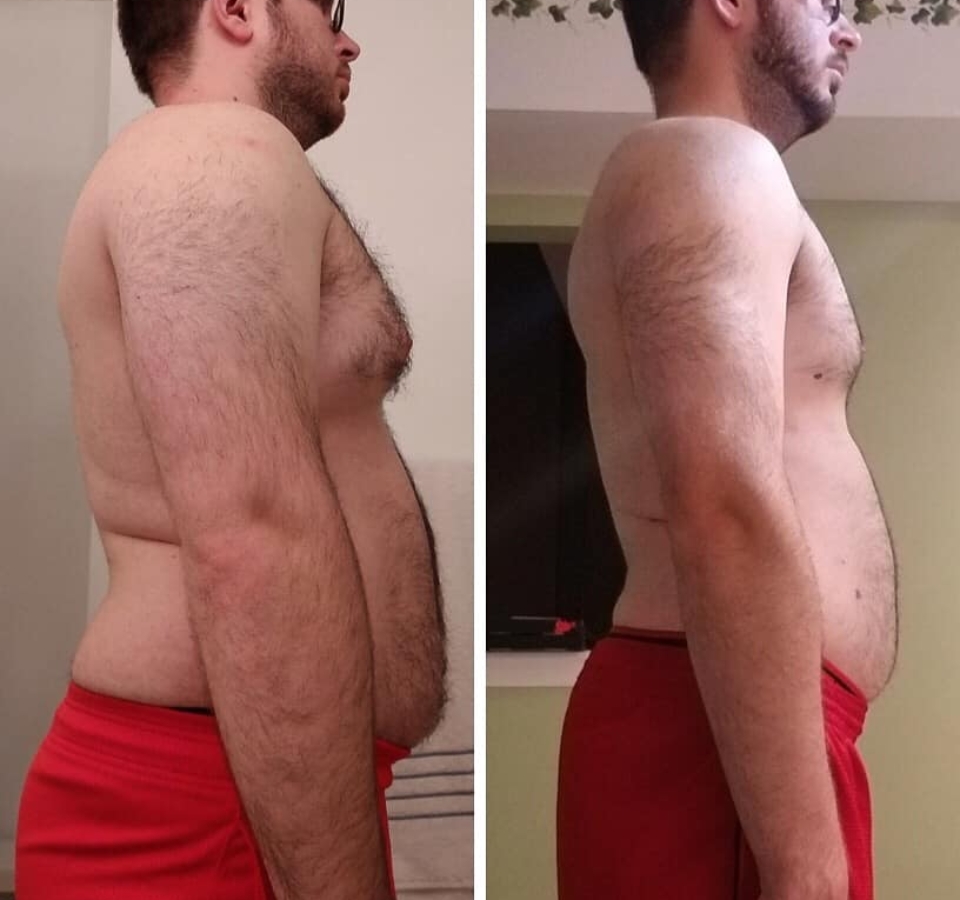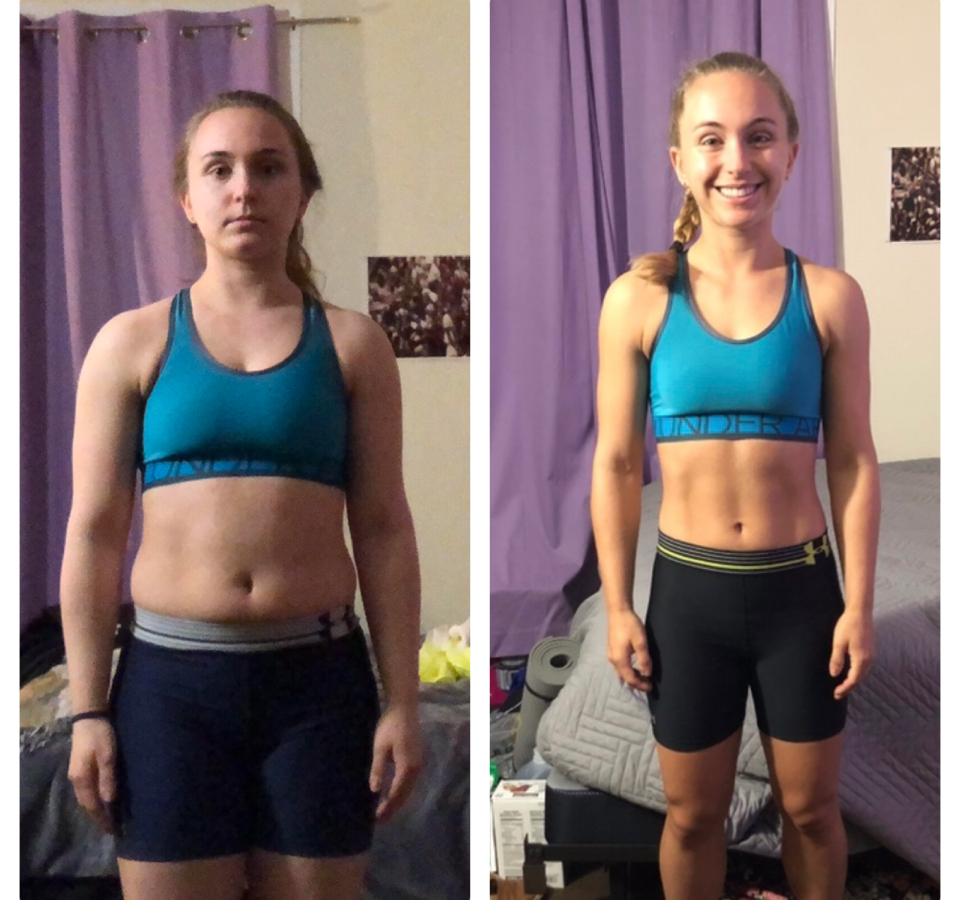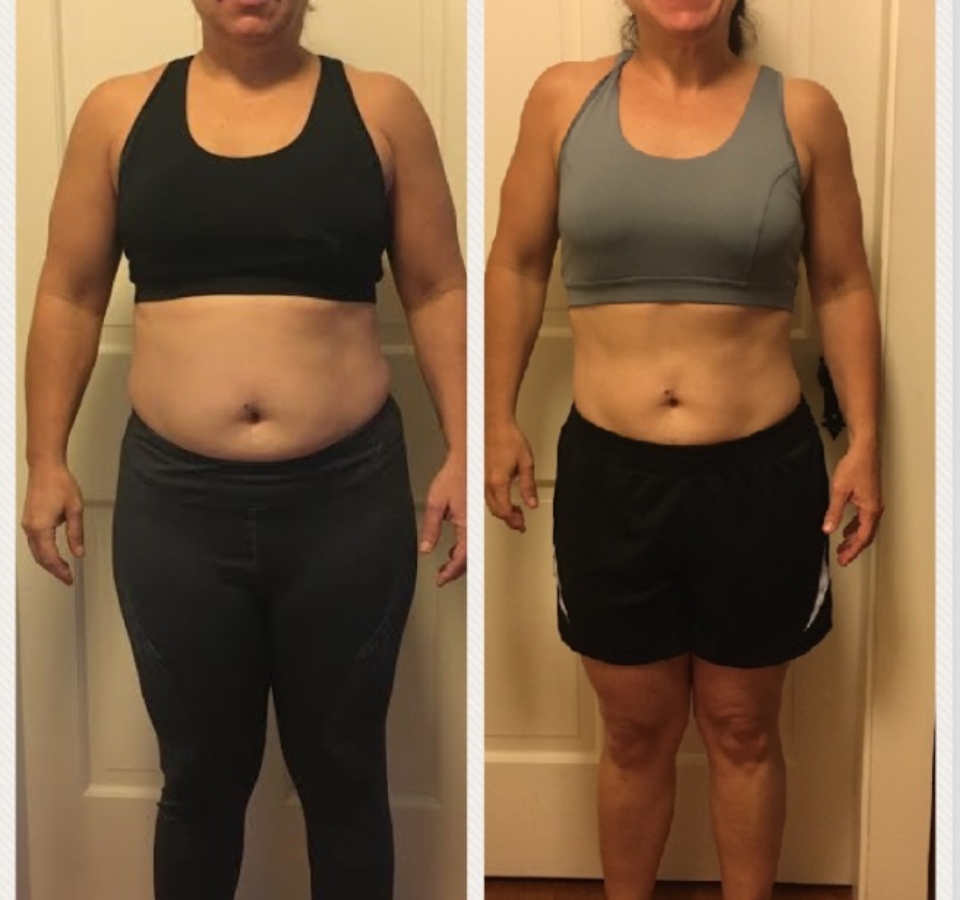If you’ve ever wondered what the “best” diet for weight loss is, I have the answer: it’s the one that consistently puts you in a calorie deficit without making you miserable.
If you’re unfamiliar, a calorie deficit occurs when you burn more calories than you take in, and it’s how ALL diets make you lose weight (no matter how they’re marketed).
So keto isn’t better than carb cycling if you can’t stick to it for more than a week and a half. And Paleo isn’t better than intermittent fasting if you’re still eating too much. And IIFYM isn’t a dieting “hack” if it burns you out by the weekend.
And truthfully, I see very few “named” diets work in the long run—which is why I typically recommend:
1) Not diving into a diet until you’re prioritizing sleep, managing stress to a reasonable degree, making mostly healthy food choices, and being active on a regular basis. I call this a “Primer Period” and it’s how all my clients enter the transformation process.
2) Getting really damn good at tracking your calories—in the form of weighing portions and complete ownership of not-so-healthy choices—before tinkering with numbers or making any fancy modifications.
3) Finding out what your “maintenance calories” are—which is how many calories it takes to maintain your bodyweight (*gasp*). You can get in the ballpark by multiplying your bodyweight by 13-14 and pursuing that calorie goal for 2-3 weeks while seeing if your bodyweight averages stay roughly the same.
4) Slowly introducing a deficit (by subtracting 250-450 calories from your maintenance) and regularly “working in” your favorite splurges in moderation—as THIS is the recipe for long-term success: staying in touch with decision-making and eating in a way you can maintain for a lifetime.

I promise dieting can look better than this
All this said, even if you set yourself for a successful dieting phase through a Primer Period, effective tracking, and regular inclusion of your favorite foods, you’ll still face obstacles like:
⇨ Burnout, which is understandable when going through a challenging process—and don’t get it twisted: dieting is challenging (even if it’s simple).
⇨ Adherence issues, which is a fancy way of saying not sticking to your plan consistently enough to see results.
⇨ Physical adaptations, like a slightly less efficient metabolism (starvation mode doesn’t exist), increased hunger, trouble performing well, and more.
The good news is, we have a LOT of calorie counting tools at our disposal for warding off these issues, starting with these six set-ups:
Strategy #1: Straight Calories
It’s worth noting that I rarely “let” a new client progress to a unique calorie counting structure before having them target the same number every day for at LEAST a few weeks. This offers several benefits, including:
✓ Education, as most people are shocked with how many calories they can eat (hint: it doesn’t need to be 1,200) while still making progress, and targeting the same number every day while tracking progress offers “proof” this is possible.
✓ The ability to plan with ease, as you’ll find a steady rotation of meals that work well for your non-moving target—as opposed to targeting a different number several days per week.
✓ Less long-term “diet fatigue,” because simplified planning allows you to devote more bandwidth toward other priorities: like sleep, stress management, and strength training.

Many of my clients use yoga as part of their bedtime ritual (for stress relief AND better sleep)
As always, there’s another side of the coin to consider:
⇨ Some people get bored with Straight Calories, and don’t mind a moving target—especially if their unique plan involves a high calorie day.
⇨ Straight Calories don’t account for a varied energy needs (and wants), like a workout routine or social event you might want “extra” calories for.
⇨ At times, Straight Calories lack an intuitive component, especially on days you’re full before reaching your calorie target and feel like you “have to” use the rest of your calories. But it’s okay to fall a little short (or even go over your target a little) if you’re listening to your body.
In most cases, my VIP Nutrition Coaching clients use Straight Calories for at least our first month together, and often stick with this approach until their first diet break (8-20 weeks later) if they’re progressing well. After all, it makes zero sense to mess with what’s working for the sake of arbitrarily including variety.
Strategy #2: The Single Day Breather
You can use the Single Day Breather—a single high calorie day—proactively OR reactively, depending on the benefit you’re after.
When using it proactively, it’s largely for mental benefits, as knowing you have a “high calorie” day to look forward to (for an “extra” hard workout or social splurge) can be the breather you need to stay locked in the rest of the week. This is NOT to be confused with a cheat day, which reinforces deprivation and overeating.
Here’s what your set-up could look like:
Monday: 1,925 calories
Tuesday: 1,925 calories
Wednesday: 1,925 calories
Thursday: 1,925 calories
Friday: 1,925 calories
Saturday: 1,925 calories
Sunday: 2,375 calories
With this approach, you’d average ~1,990 calories per week and see the same exact progress as you would using the Straight Calorie approach of targeting 1,990 every day. The average is king.
Although, you should know that the scale might be up (sometimes 2-3+ pounds) the day after a Single Day Breather—but a “real” pound is equal to 3,500 calories; you’re only looking at water weight.

Occasionally, I’ll use a Single Day Breather reactively (by adding 250-400 calories to a client’s target) for clients who use the Straight Calories approach but have an unexpected special occasion—like a work event or night out—pop up. This allows them to enjoy themselves without agonizing over calories.
The only “downside” to the reactive Single Day Breather is a marginal dent in that week’s deficit, which couldn’t be any less of a big deal if you’re operating with an ounce of patience.
Aside from this, the only potential downside of a Single Day Breather is weekend build-up, if somebody internalizes this as a “famine and feast,” cheat day kind of thing. So I’ll often challenge clients to use their Single Day Breather earlier in the week, when they’re less likely to overdo it or associate it with weekend splurges.
Strategy #3: The Weekend Warrior
This is one of the more popular approaches amongst my highly social clients. Instead of pursuing the same target every day, you get five low calorie days and two high ones (for weekend festivities):
Monday: 1,875 calories
Tuesday: 1,875 calories
Wednesday: 1,875 calories
Thursday: 1,875 calories
Friday: 1,875 calories
Saturday: 2,275 calories
Sunday: 2,275 calories
Again, you’ll average ~1,990 calories, and experience benefits like:
✓ Increased social flexibility, as you’ll have “extra” calories to allocate toward alcohol, appetizers, and other goods that wouldn’t necessarily fit.
✓ Increased sustainability, as this can feel a lot less like a typical “diet” for someone who likes to enjoy themselves on the weekends without feeling bad or blowing progress.
But we can’t overlook the obvious downsides, like:
⇨ Excessive weekend build-up (just like the Single Day Breather), where you spend all week obsessing over the splurges you’ll get to enjoy over the weekend. This can be avoided by being proactively moderate throughout the week, and not depriving yourself.
⇨ Potential dips in food quality if you don’t have “non-negotiables” in place. Examples I’ll have clients use on their high calorie days include:
• 2+ lean proteins
• 2+ fruits
• 2+ vegetables
• No more than one splurge
If you commit to non-negotiables like these, you’ll leave plenty of room for splurges without completely sacrificing food quality and mindfulness.

Fun fact: eggs aren’t a good source of protein. You can learn 15+ better ones HERE
⇨ Potential tracking issues
Again, most people use their high calorie days on alcohol and meals out, and this lends itself to inaccurate MyFitnessPal entries. Unsurprisingly, people then get frustrated with their lack of progress.
This where I’ll challenge people’s expectations—which MUST be in line with efforts for long-term success.
Either you can reel it in and splurge less with the extra calories, or you can be more patient when progress inevitably comes a little slower. You can’t have both: and unwillingness to sacrifice and ridiculously high expectations.
Strategy #4: The Workout Warrior
You don’t have to care about lifting massive weights to benefit from the Workout Warrior approach.
When you give your body “extra” fuel for workouts (the general premise of the Workout Warrior), you’ll perform better and likely use heavier weights during your workouts—and while this isn’t the be-all, end-all of an effective workout, it’s tremendously important for maintaining muscle while dieting.
So it can be a great option for people who don’t want to lose hard-earned muscle, which comes with:
⇨ Fewer calories burned at rest
⇨ A lengthier dieting timeline
⇨ Potential strength dips
⇨ A less “toned” look
If this is something you want to avoid, and you want to try the Workout Warrior approach, it’s most beneficial to use the extra calories on performance-friendly carbs like white rice and potatoes. This is your body’s go-to fuel source for hard workouts, and why this approach is more commonly called “carb cycling.”
———
Here’s how we’d structure it to average ~1,990 calories while working out three days per week:
Rest: 1,900
Workout: 2,110
Rest: 1,900
Workout: 2,110
Rest: 1,990
Workout: 2,110
Rest: 1,990
Here’s how we’d structure it if you were working out four days per week:
Workout: 2,070
Workout: 2,070
Rest: 1,880
Workout: 2,070
Workout: 2,070
Rest: 1,880
Rest: 1,880
Per usual, neither set-up is “best” if the outcome is the same.
While we’re on the subject: I know you might stuck doing bodyweight workouts right now… but that doesn’t mean you need to be doing endless Squat and Push-Up variations and useless “Instagrammy” exercises.
You can claim your copy of the At-Home Handbook and get 90+ HIGHLY effective exercises my clients are using at home (and a sample program):
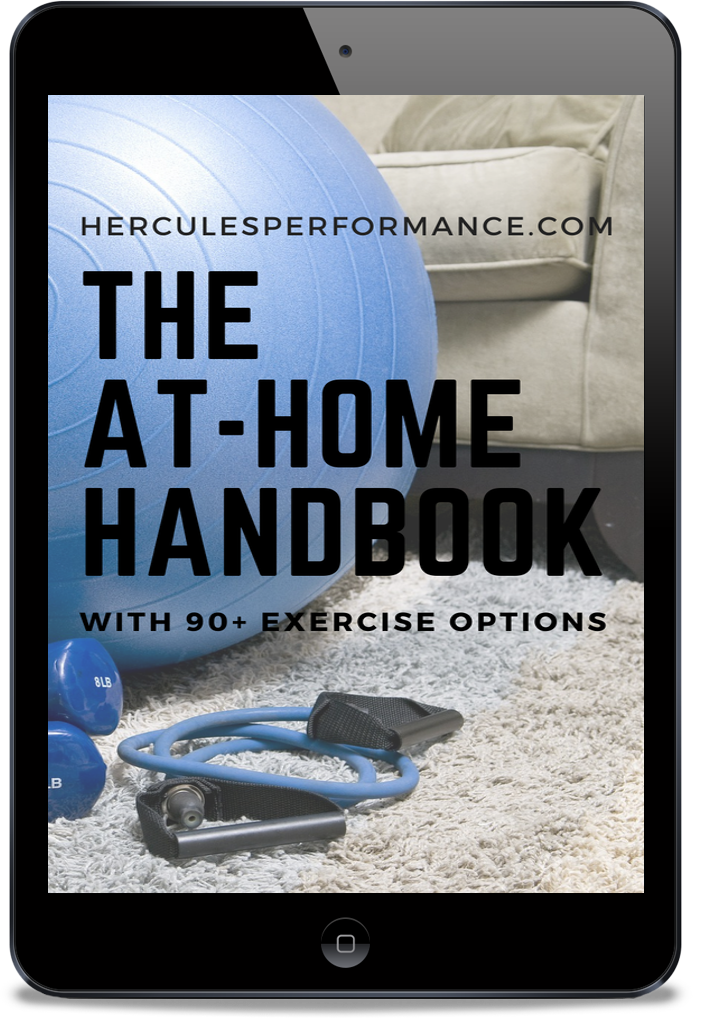
Strategy #5: The Matador Protocol
I don’t recommend trying the Matador Protocol if your maintenance calories are low OR you’re impatient. In its truest form, it requires a “strict” 30% calorie deficit for two weeks followed by two weeks at maintenance.
So if my maintenance calories were 2,400, I’d be aiming for 1,680 calories per day for two weeks, then jump back to 2,400 for two weeks.
Then I’d rinse and repeat until I reached my goal.
But it’s worth nothing: a steep calorie deficit doesn’t leave wiggle room for messing around. You can’t eat out often or get lackadaisical with tracking. To maximize the Matador Protocol’s effectiveness, you have to embrace the suck and stick to your plan. There’s no “hack” or way around it.
And when your calories come up to maintenance, you can’t panic over the inevitable scale increase (which is water) OR get careless and slip into a surplus: the two most common mistakes.
All this said, if you’re willing to tough it out and stay patient, the Matador Protocol is tough to beat for muscle retention, weight management skill development, and long-term success—which is FAR more important than fleeting scale “success.”
Strategy #6: Fat loss sprints
Physiologically speaking, most people can diet for at least 2-4 months before things get harder in the form of:
⇨ A slightly reduced metabolism
⇨ Persistent cravings and hunger
⇨ Drops in performance
⇨ Stress and fatigue
But this doesn’t account for the mental fatigue that can occur well before that—which is why I use Fat Loss Sprints with clients with a history of aggressive dieting who burn out quickly.
I consider it a mix between the Straight Calorie approach and the Matador protocol, in that you remain in a consistent deficit for 4-6 weeks at a time, then practice maintenance (as it is a skill) for 1-2 weeks. Here’s what this might look like:
Week 1: 1,990 calories
Week 2: 1,990 calories
Week 3: 1,990 calories
Week 4: 1,990 calories
Week 5: 2,400 calories
Like any other calorie counting approach, I’d repeat this until the transformation goal is met.
The obvious upside is the mental breather you get every 4-6 weeks, when you get extra calories to play with. It’s also easier to stay on track during your weeks “on,” knowing there’s a light at the end of the tunnel. There’s also slight physiological upside (like increased performance and metabolism during your maintenance weeks).
No real downside comes to mind, as long as you don’t use your time at maintenance as an excuse to go buckwild.*
*If you find yourself doing this, you’ll likely being too restrictive during your weeks in a deficit.
I can’t stress enough how unimportant the set-up you go with is as long as:
• You remain in a calorie deficit
• You’re prioritizing whole foods
• You’re not depriving yourself
• It’s something sustainable
Again, this typically means mastering the Straight Calorie approach for several weeks until you tinker with anything (if at all). From there, here’s a recap of your options:
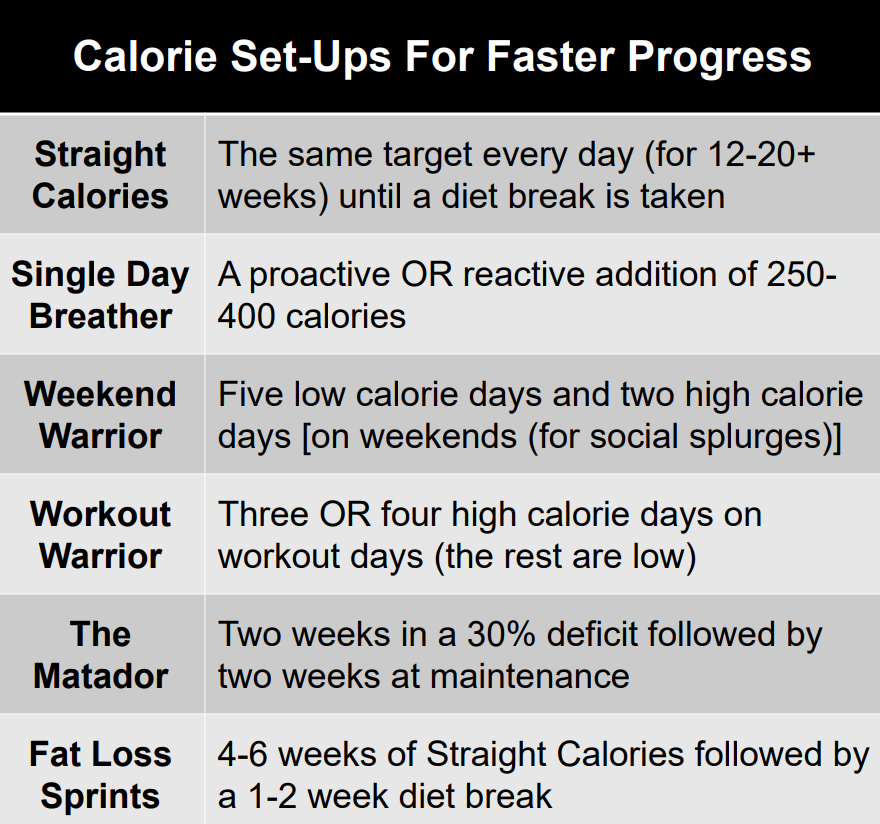
If you have any questions on this, or prefer to leave the math and adjustments to somebody else, I might be able to help. My VIP Coaching Clients know their time and energy isn’t well spent agonizing over calorie counting set-ups and progress assessments, so they leave it to me.
Then they count on me to hold them to the process they committed to, and it produces results like this:



